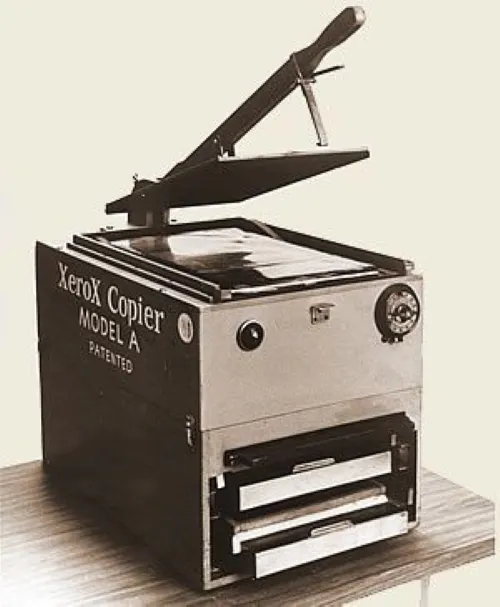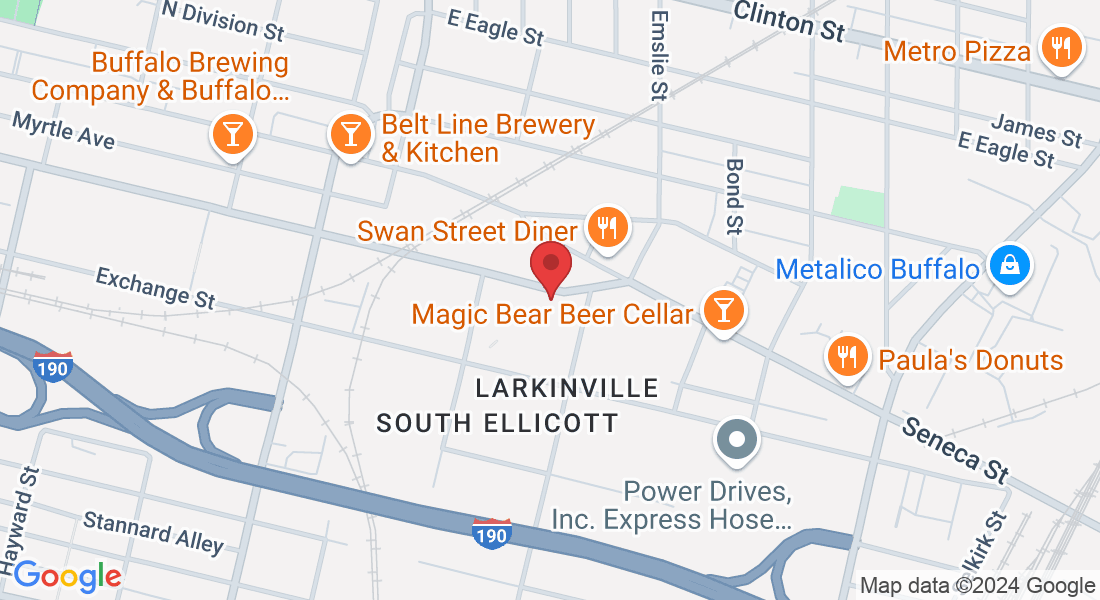BLOG

The Evolution of the Copier: From Analog to Digital Solutions in the Modern Office
The copier industry has undergone remarkable transformations since its inception. What began as a simple tool for duplicating documents has evolved into a vital component of modern office operations. From the early mechanical machines to today’s multifunctional digital copiers, this evolution highlights the ways businesses have adapted to growing demands for efficiency, flexibility, and digital integration. In this blog, we’ll take a closer look at the journey of copiers, exploring their transition from analog to digital, their role in the workplace, and the ongoing innovations that continue to shape their future.
The Early Beginnings: The Birth of the Copier
The story of copiers dates back to the late 1800s, when a Scottish inventor, James Watt, patented the first method of reproducing a document. However, it wasn’t until the 1950s that the copier industry as we know it today began to take shape, thanks to the efforts of the Xerox Corporation.
The Xerox 914, introduced in 1959, was the first widely successful photocopier that used an electrostatic process known as xerography. This technology used an electrostatic charge to transfer dry ink onto paper, revolutionizing the way businesses duplicated documents. Prior to the Xerox 914, copying documents was an extremely time-consuming and labor-intensive process, making it impractical for most companies.
With the introduction of this breakthrough machine, companies could now easily and efficiently make copies of documents. The Xerox 914 laid the foundation for the copier industry and forever changed the landscape of office operations.
The Rise of Stand-Alone Analog Copiers
As businesses increasingly relied on copiers, the demand for more affordable and accessible machines led to the creation of stand-alone analog copiers in the 1960s and 1970s. These machines were smaller, more cost-effective, and could be used by a wide range of businesses, from small offices to large corporations.
Analog copiers worked by utilizing a set of mirrors, lenses, and a light-sensitive drum to make copies of documents. This technology allowed for faster and more efficient duplication of documents compared to earlier methods. Innovations such as automatic document feeders, the ability to shrink or enlarge images, and the development of faster copiers further improved the functionality and accessibility of copiers.
While the analog machines were a significant improvement, they were limited by their reliance on physical toner cartridges and their inability to perform tasks beyond copying.
Enter the Digital Copier: A New Era of Efficiency
By the 1990s, digital technology began to overtake analog systems, marking the next major shift in the copier industry. Digital copiers introduced a host of new capabilities, including the ability to store and modify digital files, making them more versatile and adaptable to the needs of modern businesses.
Unlike analog copiers, digital machines could not only make copies but also print, scan, and fax documents. These multifunctional capabilities streamlined office workflows, eliminating the need for multiple machines to perform separate tasks. Digital copiers could also connect to networked environments, making it easier for employees to send documents directly from their computers to the copier.
One of the key benefits of digital copiers was their flexibility in document management. Users could adjust settings for quality, contrast, and color, ensuring that each copy met their specific needs. Additionally, digital technology enabled faster copying speeds and higher-quality outputs.
The Breakthrough of Color Copiers
The introduction of color copiers marked another significant advancement in the industry. Early color copiers were large, expensive, and relatively slow compared to their black-and-white counterparts. However, as technology improved, the cost of color copiers began to decrease, and their performance increased.
Color copiers allowed businesses to create vibrant marketing materials, presentations, and reports in-house, saving both time and money compared to outsourcing these tasks. The ability to produce high-quality color documents brought a new level of professionalism to many businesses and became an essential tool for creative departments and marketing teams.
As color copiers became more affordable and efficient, they became increasingly popular in offices across the globe, enabling businesses to produce high-quality printed materials without the need for expensive printing services.
Automated Finishing Options: Streamlining Document Processing
As the copier industry continued to innovate, manufacturers introduced automated finishing options that further enhanced the functionality of copiers. These features, such as folding, stapling, hole punching, and booklet creation, eliminated the need for manual document assembly, saving time and reducing the likelihood of errors.
Automated finishing options made it easier for businesses to produce polished, professional-looking documents with minimal effort. What once required multiple steps and labor-intensive tasks could now be accomplished automatically, allowing employees to focus on more critical work.
These finishing capabilities were particularly beneficial for businesses that required large volumes of printed materials, such as brochures, reports, and presentations. With automated finishing, companies could produce high-quality documents efficiently and cost-effectively.
Copiers in the Modern Office: The Multifunction Hub
Today, copiers have become a central hub in modern office environments, adapting to the changing needs of businesses and integrating seamlessly with digital workflows. Modern copiers are no longer just machines for making copies—they are multifunctional devices that can print, scan, copy, and fax documents, all from a single machine.
The most advanced copiers now offer a range of features that include wireless connectivity, cloud integration, and artificial intelligence. Wireless capabilities allow users to send documents to the copier from their smartphones, tablets, or laptops, making it easier than ever to print or scan documents from virtually anywhere.
Cloud integration has also become a key feature, allowing businesses to store and access documents remotely, collaborate in real-time, and streamline document management. Additionally, AI-powered copiers can learn and adapt to users’ preferences over time, optimizing settings for efficiency and improving the overall user experience.
One of the most important changes in modern copiers is their focus on security. With the increasing amount of sensitive information being processed by copiers, manufacturers have introduced advanced security features such as secure printing, encrypted communications, and user authentication to ensure that confidential documents remain protected.
Another growing trend in the copier industry is the emphasis on energy efficiency and environmental responsibility. Many modern copiers are designed to reduce energy consumption, promote recycling, and minimize waste, helping businesses lower their environmental impact while maintaining high levels of performance.
The Future of Copiers: Innovation and Adaptation
As businesses continue to embrace digital solutions for document management, the copier industry is expected to keep evolving. Future innovations will likely focus on improving functionality, user experience, and environmental sustainability.
We can expect copiers to become even more integrated with digital platforms, offering more sophisticated cloud-based features, mobile printing solutions, and enhanced automation. As artificial intelligence continues to advance, we may see even smarter copiers that can predict maintenance needs, optimize workflows, and offer personalized user experiences.
The growing demand for environmentally friendly solutions will also push manufacturers to develop more eco-conscious copiers, using sustainable materials and energy-efficient technologies.
Conclusion: Copiers Are Here to Stay
While the way we manage and store documents continues to evolve, copiers remain a vital tool in the modern office. From their humble beginnings as simple duplication machines to their current status as multifunctional, digital devices, copiers have adapted to meet the needs of businesses across industries.
Today’s copiers are more than just machines for making copies—they are integral parts of digital workflows, offering a range of features that help businesses operate efficiently and securely. As the copier industry continues to innovate, we can expect copiers to remain an essential tool in the workplace, helping businesses stay connected, productive, and environmentally responsible.
Ready to Upgrade Your Copier?
As the copier industry continues to evolve, it’s essential to stay ahead of the curve. If you’re looking for a new copier solution, make sure you partner with a trusted provider who can guide you toward the best machine for your business needs.
Whether you’re upgrading to a newer model or investing in a multifunctional device that can streamline your office workflows, it’s important to choose a copier that will meet your requirements for efficiency, security, and sustainability. Reach out to a trusted copier provider today to explore the latest options and take your office productivity to the next level.
Copyright © 2024. QLS Solutions Group. All Rights Reserved | Terms & Conditions | Privacy Policy






